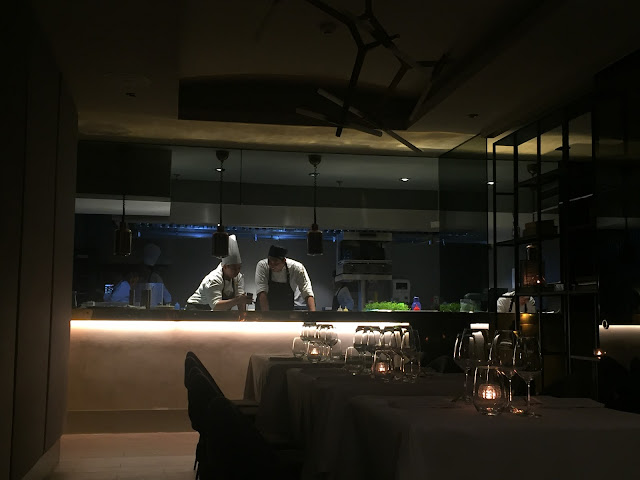FOO'D
Anna, once again, wanted to eat masarap. After a bit of searching on Google, we went to a restaurant called Foo'd (by Davide Oldani) at the Bonifacio Global City. Apparently, we hit a gold mine in this restaurant because it features fusion cuisine. It mixes European cuisine with the freshest ingredients available in the Philippines to create what Chef Oldani calls cucina pop, for everyone).
I like this concept because it means that access to high-quality food is not limited to the elite. The rest of the populace can afford to eat such good food in such lofty spaces without breaking their wallets and without keeping up with the Joneses.
Anna and I decided to go for the five-course tasting menu each. However, because of my food allergies, I had the signature tasting menu (no allergens!!) while Anna had the regular tasting menu (peppered with squid and anchovies).
I wholly enjoyed eating each of the five courses included in my tasting menu. And thanks to the chef who personally went to our table to explain the food that we were eating... though I don't remember everything she said. I only remembered the highlights.
For instance, I opened my meal with cipolla caramellata, which contains caramelised onions served with mild cheese (grana padano). Then, I dug into two courses (I forgot their names) that had two different caviar-looking materials; the first dish had tapioca balls made to look like caviar (hence, these are actually sago) and the second dish had real caviar (from trout). These two might look alike but highly distinguishable texture- and taste-wise. It was very fascinating... the wonders of food science.
The restaurant's cozy ambiance and the friendliness of the staff made for a warm dining experience. While Anna and I were eating our desserts, we concluded that we'll bring our parents, Biboy, and Barbara here when they come for a visit.
We shall return!


Comments
Post a Comment
Thank you for dropping by!
Before moving on, please share your thoughts or comments about the post. :)
Thanks again!